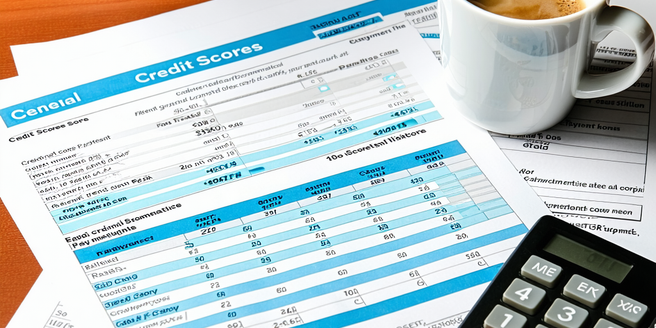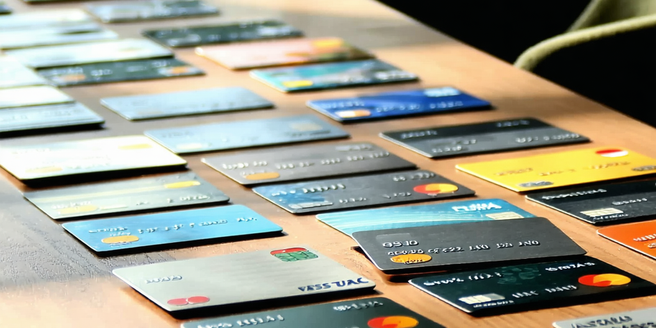
Understanding Your Credit Score
| Component | Impact | Details |
| Payment History | Highly Significant | Accounts for 35% of score; timely payments crucial |
| Credit Utilization | Quite Important | 30% of score; keep balances low |
| Credit History Length | Moderately Influential | 15% of score; longer history benefits you |
| New Credit Inquiries | Less Impactful | 10% of score; too many can lower score |
| Credit Mix | Least Significant | 10% of score; variety of credit types helps |
| Derogatory Marks | Highly Detrimental | Bankruptcies, liens, or collections can severely lower score |
Secured vs Unsecured Loans Explained
Understanding the differences between secured and unsecured loans is crucial when evaluating your borrowing options. Secured loans are backed by collateral, such as a car or a house, which reduces risk for lenders as they can claim the collateral if you fail to repay. This typically results in lower interest rates and higher borrowing limits. However, with unsecured loans, there is no collateral involved. Lenders rely on your creditworthiness, making them riskier, so interest rates tend to be higher with potentially less favorable terms. One must weigh the pros and cons of each based on personal financial situations and risk tolerance before committing to either option. For those with bad credit, secured loans may offer more flexible terms, though they do carry the risk of losing your asset if you’re unable to repay.
Exploring Peer-to-Peer Lending
Peer-to-Peer (P2P) lending has emerged as an innovative alternative to traditional loan methods, particularly attractive to those with less than perfect credit. Facilitated through online platforms, individuals can borrow directly from other people, bypassing banks and financial institutions. This can result in more competitive interest rates for borrowers. Additionally, P2P lending offers a level of transparency often not found with traditional loans, as borrowers and lenders are connected directly. This system can appeal to those seeking loans with flexible underwriting criteria. However, the risk is higher for lenders compared to banks, which means interest rates might be higher for borrowers with bad credit. It’s important to understand the terms and conditions thoroughly and assess the reliability and reputation of the platform before proceeding. Always ensure due diligence to avoid potential pitfalls.
Credit Union Opportunities
Credit unions present an appealing option for borrowers seeking alternatives to traditional bad credit loans. These non-profit financial institutions often provide more personalized services and may offer lower interest rates compared to banks, particularly for members. Credit unions are known for their community-focused approach and may be more willing to consider your entire financial picture, not just your credit score, when assessing loan applications. Membership usually requires you to be part of a specific community or group, but the terms can be accommodating, which is beneficial for those with credit challenges. They might also offer credit-building programs to help improve your financial standing. Leveraging credit union resources can lead to more favorable loan terms and a supportive financial relationship that can aid both immediate and long-term financial goals.
The Role of Co-Signers
Involving a co-signer in your loan application can be a strategic move, especially for those with bad credit. A co-signer, someone who agrees to repay the loan if the primary borrower fails to, provides additional security to lenders. This additional security might lead to better loan terms, such as lower interest rates or higher borrowing limits, as the loan risk is distributed. It is essential, however, to choose a reliable co-signer with good credit to enhance the positivity of your application significantly. The co-signer will be legally obligated to pay off the debt if you default, so it is a responsibility that requires trust and transparency between both parties. It brings benefits but also has potential drawbacks, as it could strain personal relationships if not managed properly. Both parties should discuss and agree on expectations before proceeding.
Debt Consolidation Options
For individuals grappling with multiple debts, debt consolidation can serve as a viable alternative to new borrowing. This involves combining several debts into a single loan with one monthly payment, ideally at a lower interest rate. The streamlined repayment process not only simplifies financial management but can also save on interest charges over time. Options for debt consolidation include personal loans, home equity loans, or balance transfer credit cards, each with its own set of terms and conditions. Credit counseling agencies can also provide guidance on the most suitable consolidation strategy. However, it’s critical to ensure that the consolidated loan doesn’t extend the debt period extensively or lead to higher total interest costs. Responsible management and commitment to the payment plan are key to successfully alleviating the burden of overwhelming debt.
Credit Builder Loans Explained
Credit builder loans are specifically designed to assist individuals in improving their credit profile. Unlike typical loans, the borrower does not receive the money upfront. Instead, the amount is held in a savings account while fixed payments are made regularly. Once the loan term ends, the borrower receives the accumulated funds, minus any interest and fees. This process reports regular payments to credit bureaus, helping to build or rebuild a credit score over time. These loans can be especially beneficial for those with no credit history or those seeking to recover from past financial missteps. It’s a low-risk way to incrementally improve your credit standing. However, it’s essential to confirm that the lender reports to all major credit bureaus and understand the terms and fees involved to ensure the decision aligns with financial improvement goals.
Exploring Payday Alternative Loans
Payday Alternative Loans (PALs) are a product offered by federal credit unions designed as a safer, more affordable option to traditional payday loans. Payday loans often come with exorbitant interest rates and trapping debt cycles, whereas PALs offer a regulated and structured product for short-term financial needs. Loan amounts are typically smaller, ranging from $200 to $1,000, and come with capped interest rates and no rollovers, which helps prevent the cycle of debt associated with payday loans. To qualify, the borrower must be a member of the credit union for a certain period, often just one month. This small financial bridge can serve as a reasonable temporary relief option for those looking to avoid the high costs and terms typical of payday loans. Understanding the eligibility criteria and loan conditions will ensure alignment with personal financial needs and capabilities.
Utilizing Community Development Financial Institutions
Community Development Financial Institutions (CDFIs) serve as valuable resources for individuals and small businesses that struggle to access capital through conventional banking channels. These neighborhood-focused entities aim to provide affordable financial services in underserved communities and support economic development within these areas. CDFIs offer a range of financing products, counseling, and financial education services. They often have more flexible lending criteria than traditional banks, which can be advantageous for individuals with bad credit. CDFIs are not just about providing loans; they are committed to improving financial literacy and supporting personal and business growth. Collaborating with a local CDFI enables access to tailored financial solutions that consider your situation holistically. Engaging with a CDFI can foster not only financial opportunity but also broader community empowerment and sustainable economic growth.
How to Improve Your Credit Score
Improving your credit score is a critical step in accessing more favorable loan terms and financial opportunities. Start by understanding your credit report to identify areas that need addressing, such as disputing inaccuracies or paying down debt. Prioritize paying bills on time, as payment history greatly impacts your score. Reducing credit card balances can boost your score, reflecting responsible credit utilization. Avoid applying for multiple credit lines in a short period, as each inquiry can lower your score. Another strategy is to maintain older credit accounts open to lengthen credit history. Taking advantage of credit-building tools like secured credit cards or credit builder loans, and being mindful of credit limit increases, can also aid in score improvement. Patience and responsible management are key as credit score improvements take time, but the long-term benefits of a healthier credit profile make it an important financial goal.

